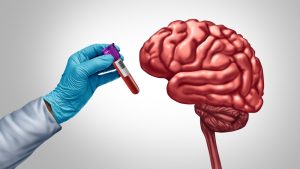A recent study has now revealed that one particular type of workout may be better than others when it comes to boosting brain health. The researchers found a link between high-intensity interval training (HIIT) workouts with better memory and brain volume in older adults. And, these brain benefits even lasted up to five years after the study was completed.
The researchers looked at 194 adults aged 65-85 who had no signs of cognitive decline. Participants were assigned to either a low-intensity exercise, moderate-intensity exercise or HIIT workout programme for six months. Participants completed three workouts per week.
The low-intensity workouts consisted of 30 minutes of stretching, balance and relaxation exercises. The moderate-intensity workouts were made up of 30 minutes of brisk walking on a treadmill.
The HIIT sessions were also performed on a treadmill, where participants completed a four-minute bout of hard exercise (at around 80-95% of their maximum heart rate) broken up with three minutes of recovery in between. This was repeated four times.
After six months of exercising, participants were then given a task designed to test their memory. Participants in the HIIT group made fewer errors on this task compared to those in the low-intensity and moderate-intensity groups.
When the participants were given this memory task again five years later, those in the HIIT group still outperformed the other groups. The scores for the low-intensity and moderate-intensity groups remained the same and did not show any improvement.
That’s not all. The researchers also discovered that the HIIT workout group had less age-related shrinkage of brain volume. MRI scans of the brain showed that the right hippocampus, an area involved in memory, was better preserved in the HIIT group than in the other two groups. As with the improvement to memory, these benefits were sustained even five years after the study ended.
Although the conclusions from the study are robust, this study only looked at people who showed no signs of cognitive decline. As such, it’s unclear whether similar findings would be seen in people with cognitive impairment.
Additionally, the HIIT sessions were conducted on treadmills – so it’s unclear if the findings would be the same if participants performed other forms of exercise.
While previous research in animals has shown a link between HIIT workouts and long-term brain benefits, this is one of the first studies to show a link between the two in humans.
Brain benefits
There are three probable mechanisms that might explain why HIIT appears to be so beneficial for brain health.
The first is that HIIT improves cardiovascular fitness. This in turn benefits how well your brain functions.
Regular HIIT workouts improve cardiorespiratory fitness, which makes it easier for the heart to pump blood around the body. This subsequently reduces the force on your arteries – lowering blood pressure.
Maintaining a healthy blood pressure is important for brain health, as high blood pressure is associated with poorer function of the small blood vessels in the brain. These changes are often accompanied by reduced brain volume in important brain regions, such as the hippocampus. This region is one of the first to be affected by Alzheimer’s disease.
The second reason HIIT may be beneficial to brain health is because it reduces inflammation levels.
Long-term, constant inflammation is shown to have many negative effects on the brain. It’s associated with poor brain metabolism and reduced brain tissue function. These changes can lead to cognitive dysfunction and have also been linked to the development of Parkinson’s disease and Alzheimer’s disease.
But HIIT workouts can reduce the levels of a protein that contributes to chronic inflammation – called tumour necrosis factor alpha (TNF-α). The production of TNF-α is one of the first responses triggered by the body’s inflammatory process. High levels of TNF-α are associated with chronic inflammation.
The third reason that HIIT may be so beneficial for brain health is because it has a positive effect on your brain cells (neurons). Healthy neurons are the brain’s information carriers. They’re important for memory and communication between brain regions.
HIIT workouts increase levels of the protein called brain-derived neurotrophic factor (BDNF) in the blood. BDNF stimulates the growth and repair of neurons.
Levels of BDNF naturally decrease as we age. However, HIIT workouts may provide an easy method to boost levels of BDNF in your body and help to improve your brain health.
HIIT workouts
It’s clear that HIIT is great for your brain health. But one thing researchers aren’t clear on is what the perfect HIIT workout plan looks like. Researchers aren’t sure if the duration of the HIIT interval (doing 30 seconds of exercise versus four minutes) or the number of intervals performed in each session matters more when it comes to brain health benefits. This will be something future research needs to investigate.
Even so, it’s clear from this study and others that HIIT is very beneficial. If you’re interested in giving HIIT a try, put together a workout plan that alternates short bursts of intense exercise (close to your max effort) with brief periods of recovery.
For example, a HIIT workout done on an exercise bike may consist of a 5-minute warm up followed by ten 30-second sprints, separated by 3-4 minutes of lower intensity exercise.
No matter the structure of the workout, HIIT provides many benefits to both brain and body.![]()
Felicity Spencer, PhD Candidate, School of Sport, Exercise, and Rehabilitation Sciences, University of Birmingham and Richard Elsworthy, Research Fellow, School of Sport, Exercise and Rehabilitation Sciences, University of Birmingham
This article is republished from The Conversation under a Creative Commons license. Read the original article.























